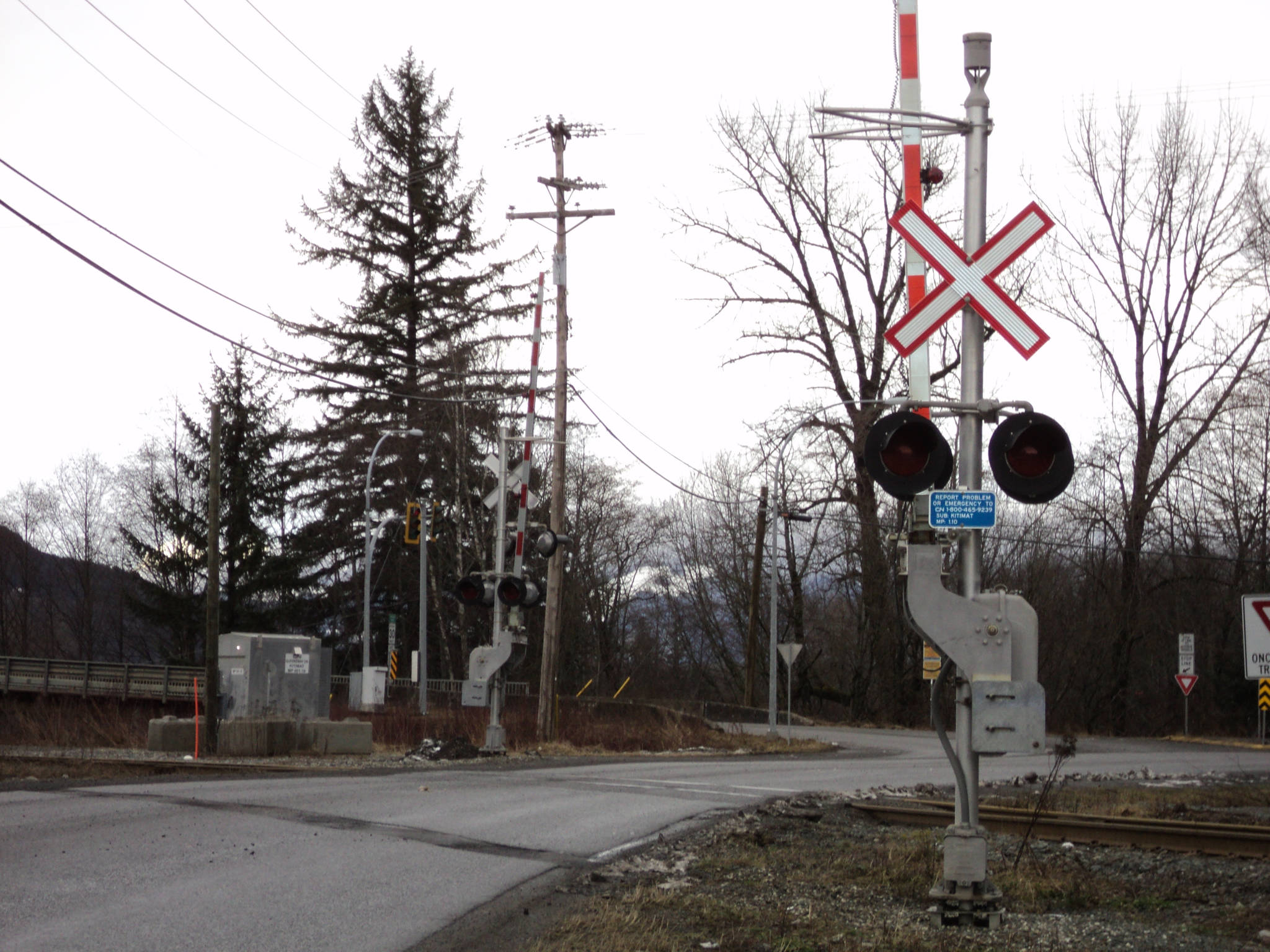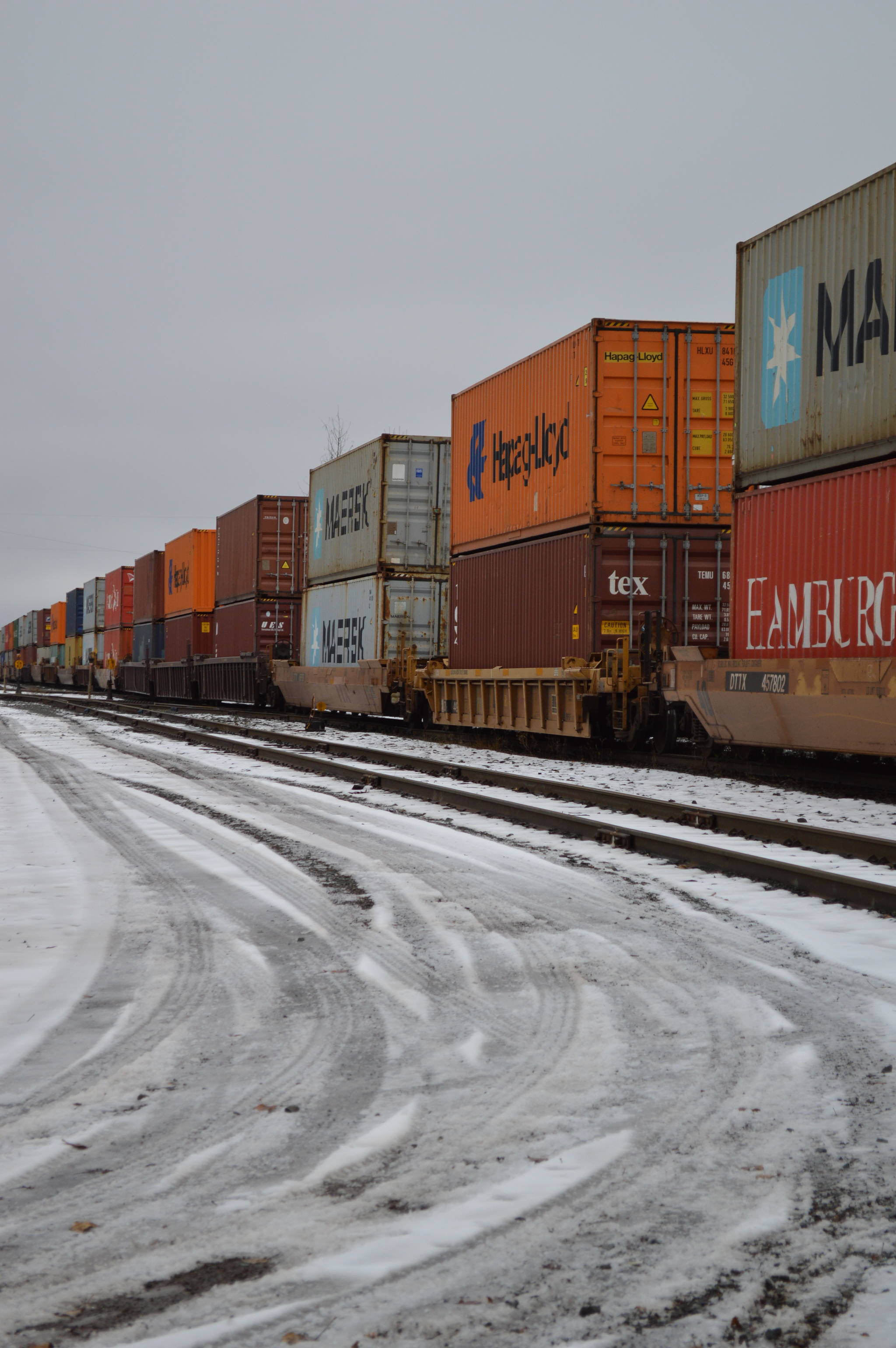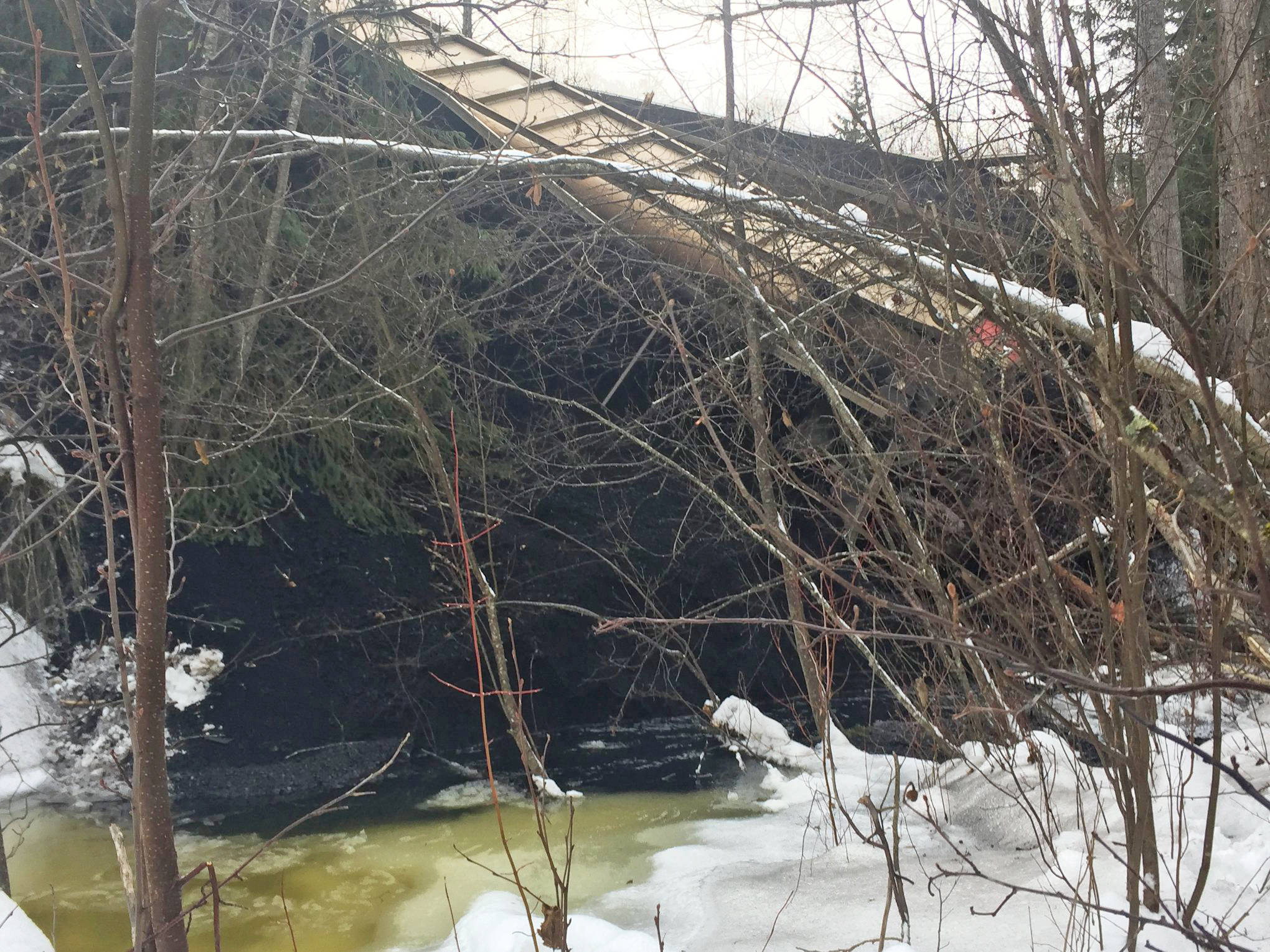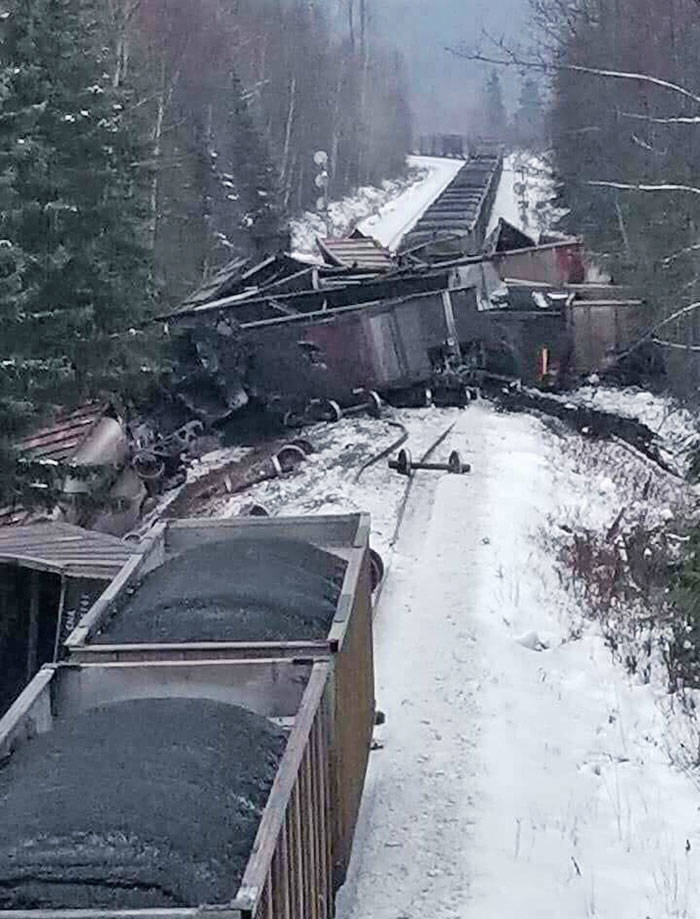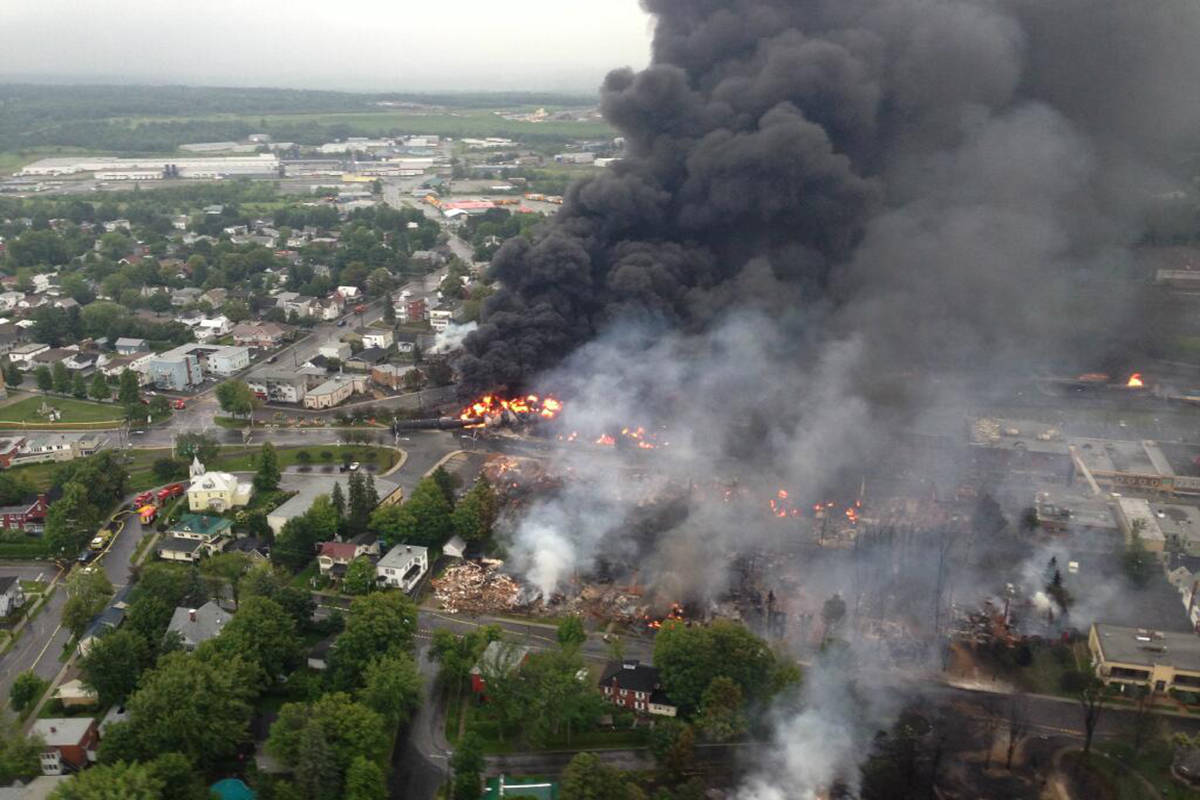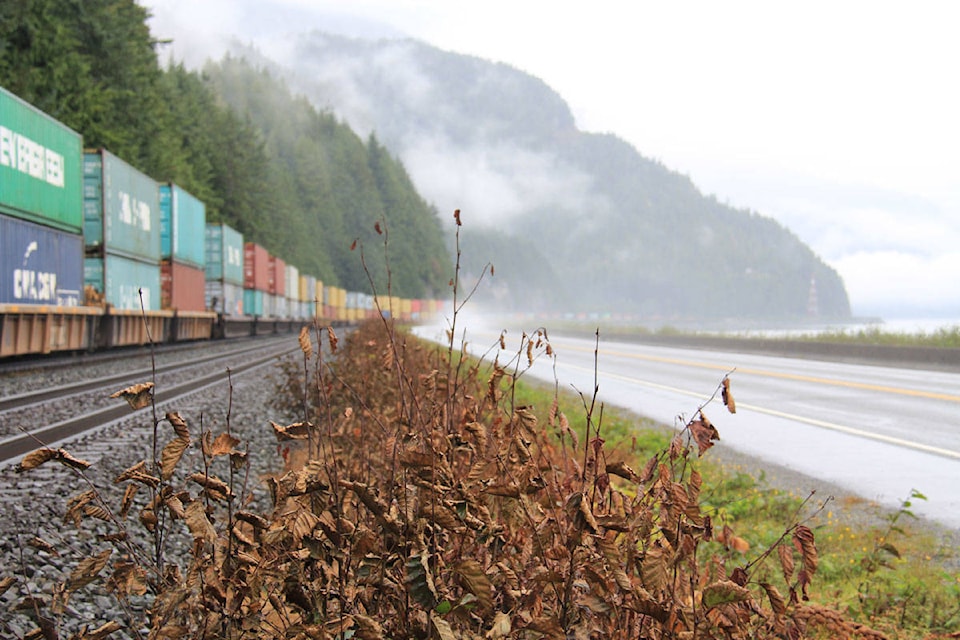Rail safety in Smithers is an ongoing concern, but with anticipated increases to rail traffic it is a growing topic of conversation.
With the current load of rail traffic at only 30 per cent of what is anticipated, and old outdated DOT 111 rail cars containing highly volatile liquid propane and other rail cars carrying dangerous goods of all kinds, the potential for an extreme catastrophe is high according to a rail safety.
A derailment or accident within any of the northern communities where the railways run through town could be as disastrous as it was to Lac-Mégantic in eastern Quebec.
In 2013, 47 people were killed and more than 30 buildings in the town’s centre were destroyed when an unattended, 73-car freight train containing Bakken Formation crude oil rolled backward down a hill and into the downtown core, derailed, and exploded, decimating the area.
READ MORE: B.C. seeks lessons from Quebec disaster
Bruce Campbell, a senior fellow at Ryerson University, and rail safety expert who wrote a book on the Lac-Mégantic disaster attended a recent virtual Town Hall on Rail Safety with M.P. Taylor Bachrach May 20. He said the rail traffic coming through Smithers and all of the communities from Prince Rupert to Prince George are at great risk right now.
“The safety of your communities is of grave concern to me, as it took eight years for Transport Canada to act on any of the recommendations that came out of a review of the Lac-Mégantic disaster, and dangerous conditions and rail cars still operate,” said Campbell.
Campbell provided a detailed report on the issues at hand.
There is a “phase-out period” for the especially dangerous DOT 111 rail cars, but that is not until 2025. These DOT 111 rail cars currently move regularly from Kitimat to Alberta, with cars that are old, potentially leaky, too thin for the liquid propane they contain, highly explosive, and move at high speeds through the rail corridor, and along the river, which brings up highly sensitive environmental concerns as well.
The concerns for residents and communities along the northwest corridor are not only about old and potentially leaky rail cars. Flawed operating procedures, weak regulatory oversight and more basic concerns about lighted or controlled crossings in Gitwangak, crossings that block the road through a community as they do in Telkwa, Houston, Burns Lake and Vanderhoof abound.
There are noise, light, and vibration issues that Prince Rupert and Terrace residents have consistently complained about. Overpasses are needed and the use of pesticides near towns and waterways raise health issues.
The laundry list of needs is long, dollars from the federal government are short, oversight from Transport Canada is slow and the Transportation Safety Board has limited power.
Disastrous derailments are not unknown in the Northwest.
There was a train derailment at Mission Creek, near Hazelton on January 19, 2018, where eight cars spilled 3,000 tonnes of selenium coal into Mission Creek.
According to local groups that managed the cleanup effort, CN’s initial response was primarily focused on their rail cars and getting rail traffic moving, not on the cleanup or environmental impacts. Cleaning up the coal was a secondary concern, at best, according to these groups and the environmental issues were minimally addressed. Safe Rail - Northern BC, made a four-minute video discussing the clean up efforts and impacts of this spill.
The proposed increase of dangerous goods shipments through the northwest corridor is 350 rail cars per day and safety and risk assessments remain solely in the hands of CN.
In 2005, the federal government outsourced safety management to companies such as CN to manage themselves, yet cut the budget, making the already dubious practice of self-regulation even more difficult.
Mayors of towns along the northwest corridor have asked CN Rail repeatedly for transparency on issues such as manifests of what is contained on the trains, what the results of safety audits or risk assessments have been, or what would happen should an unfortunate event happen in one of the towns, to no avail.
Smithers mayor Gladys Atrill, who also attended the Rail Safety Town Hall, brought up the fact that although brought up separately, each town along the tracks has basically the same issues and frustrations.
“We simply are not receiving information in its totality; we each receive information only affecting our own area. We can’t see the system in total and it leaves you with a very bleak feeling,” Atrill said
“The business brought by the railroad is great, but it cannot be at the cost of its citizens.”
READ MORE: Regional district frustrated with CN response to grievances
Bachrach, for his part, acknowledges the importance of the rail sector in the region.
“The railroads built this region’s towns and cities, and hundreds of people are employed by them, they are an essential part of the economy and central to getting this region’s goods to international markets. No one is rail bashing here tonight, these are reasonable concerns by reasonable people, and communities want assurance that if something goes terribly wrong, there is the capacity and plan to protect communities and the environment,” Bachrach said.
The purpose of the Rail Safety Town Hall, according to Bachrach, was to bring the concerns to Ottawa and the Transportation Committee, which he is a member of, as rail safety is on the agenda in an upcoming meeting of Parliament.
“The concerns up and down the rail corridor are in large part about the increase in rail traffic, the increase in transport of dangerous goods, the ability of communities’ response capacity, and regional risk assessments that would be transparent and available,” Bachrach said
“There are huge gaps in the work that has to be done to ensure rail safety.”
Bachrach went on to discuss two separate incidents near Field, B.C. In the first, there were three fatalities. Two years later, in almost the exact same spot, it happened again. There were no fatalities, it was under the same set of circumstances.
“We have to ask some serious questions about a regulatory system that allows the same situation to happen, two years later. Proper corrective actions were not taken, obviously, by the regulator or the rail company to prevent that,” Bachrach commented.
READ MORE: Bachrach named transport critic, targets air travel, rail safety and tanker moratorium
There are currently two parliamentary watchdog reports discussing the state of rail safety, one by the Environment Commissioner published October 2020, and a recent report by the Auditor General, both expressing concerns over rail safety.
Bruce Campbell’s book on the Lac Mégantic disaster is called “Public Betrayal, Justice Denied.”
deb.meissner@interior-news.com
Like us on Facebook and follow us on Twitter
